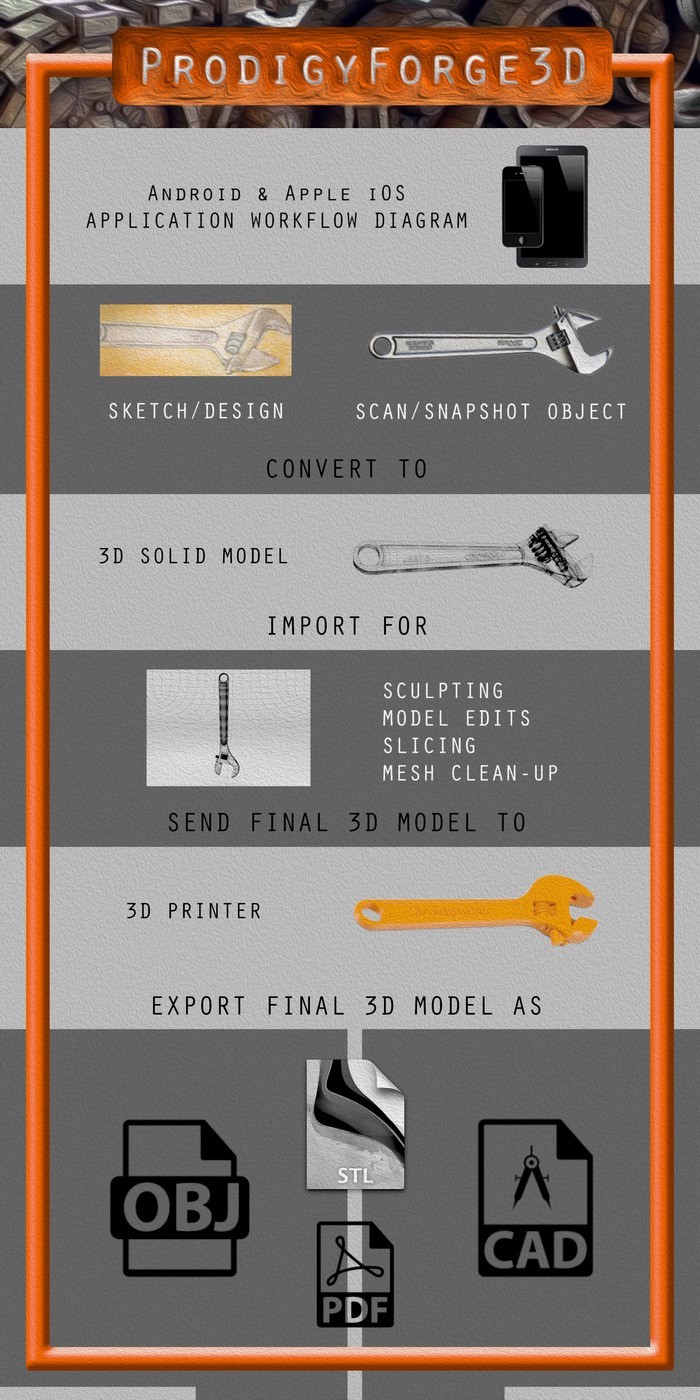Latest News
July 23, 2014
One of the few quandaries for greater adoption of additive manufacturing (AM) is the amount of technical knowledge required to design viable 3D models. True, design programs have become easier to use in the last couple of years, but there’s still plenty of room for improvement. Even if you don’t believe in the home market, companies are beginning to see the value of hiring designers for AM with a variety of degrees and backgrounds, few of which include extensive experience with highly technical CAD programs.
ProdigyForge3D (PF3D) is an interesting project that is just getting started. Developed by startup Prodigy Forge, the goal of the project is to build a 3D design app that is crowdsourced, crowdfunded and crowddriven. Reckoning a new generation of designers will prefer a new platform for design, PF3D intends to begin life as an app for mobile devices, only developing more traditional software based on customer demand.
 ProdigyForge3D workflow explained. Courtesy of Prodigy Forge.
ProdigyForge3D workflow explained. Courtesy of Prodigy Forge.Before getting into the specifics of what the app plans to offer, let’s take a moment to consider the manner in which PF3D is being developed. Not even five years ago it would have been hard to take anyone seriously that expected the crowd to not only pony up for costs, but also help design and develop a brand new 3D design program. Now that idea doesn’t seem quite so far-fetched.
Prodigy Forge is raising startup cash via Kickstarter to continue basic development operations for two years, and it intends to do so by offering what are essentially knick knacks. Unless I’m blind, at no point is any backer offered a copy of the final product. Instead, backers are offered T-shirts, artwork, and the right to suggest features. That’s either incredibly brazen or financially strategic, maybe both.
Granted, PF3D isn’t asking for a lot of money, $69,000 is a modest seed for a brand new program, but $200 for a painting of unknown quality, a designer credit, and the power to recommend a single feature seems rather pricey. While the features PF3D is offering are interesting, it’ll be just as interesting to see whether this brand of financial backing is actually successful.
Back to the features: PF3D will offer sketch-up and scanning, including support for the Occipital Structure Sensor, as the primary methods of beginning a 3D design. From there the image flows to a traditional design studio where it can be edited, sculpted, and detailed. Other options include lighting effects, textures, and rigging. Finally, a model moves to the slicing area to be prepared for 3D printing.
3D models may also be output in the form of digital video, or can even be squashed back down to 2D for blueprints. The app will also include a social component, where users can share their designs, cloud integration for storage, and professional 3D design resources.
Below you’ll find the Kickstarter video for PF3D.
Source: Kickstarter
Subscribe to our FREE magazine, FREE email newsletters or both!
Latest News
About the Author
John NewmanJohn Newman is a Digital Engineering contributor who focuses on 3D printing. Contact him via [email protected] and read his posts on Rapid Ready Technology.
Follow DE





